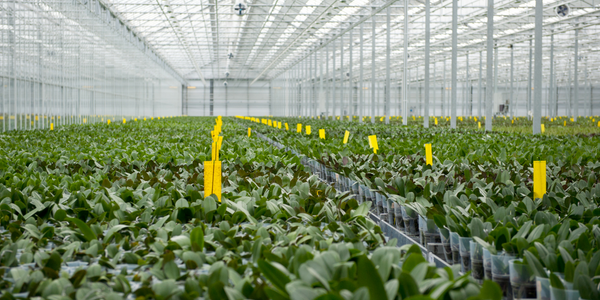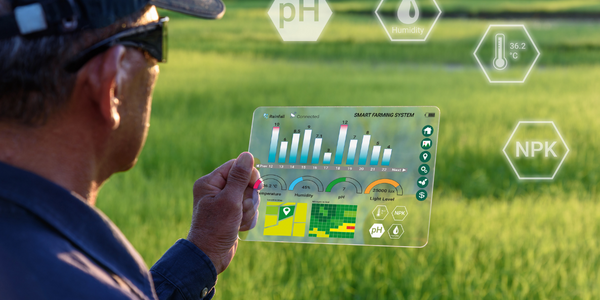Download PDF
Minnesota Bakery “Brake Bread” Boosts Average Basket Size by 50% with IoT
Technology Category
- Analytics & Modeling - Real Time Analytics
- Platform as a Service (PaaS) - Application Development Platforms
Applicable Industries
- Agriculture
- Retail
Applicable Functions
- Logistics & Transportation
- Sales & Marketing
Use Cases
- Last Mile Delivery
- Retail Store Automation
The Challenge
Brake Bread, a subscription-based and on-demand bakery in St. Paul, Minnesota, faced a significant challenge during the pandemic. The bakery, which had been delivering naturally leavened bread since 2014, saw a dramatic shift in its business model in March 2020. Previously, delivery accounted for only 25% of their business, but by September 2020, it had risen to 90%. The rapid increase in delivery subscribers, which tripled from 300 to 900 in just six months, put a strain on their existing community-supported agriculture (CSA) membership management software. The software was not equipped to handle the surge in demand, nor did it provide the necessary features such as real-time inventory, business data, marketing, payments, and delivery routing.
About The Customer
Brake Bread is a subscription-based and on-demand bakery located in St. Paul, Minnesota. The bakery was started by Micah and Nate, who began by delivering bread on bikes to their neighbors during a snowstorm. Over time, they expanded their business into a retail store, while maintaining their unique bike delivery service. Although retail became the majority of their business, the pandemic caused a shift in their business model, with delivery becoming 90% of their operations. Despite the challenges, Brake Bread has managed to adapt and thrive, tripling their delivery subscribers and significantly increasing their average order size.
The Solution
To manage the increased demand and improve their operations, Brake Bread replaced their old software with GetSwift’s eCommerce + Delivery Tech in October 2020. This comprehensive software solution provided everything from frontend and backend interfaces to real-time inventory, business data, marketing, payments, and delivery routing. The platform also offered attractive, story-focused web templates that allowed Brake Bread to connect their website to their new store, highlight other local makers sold on the platform, and market their unique story at every stage of the buyer’s journey. With GetSwift, Brake Bread could set sales goals, track their products in real-time, and access stats like average order size. They set a goal of a $12 average basket per order, which increased to nearly $16 by year’s end.
Operational Impact
Quantitative Benefit
Related Case Studies.

Case Study
Intelligent Farming with ThingWorx Analytics
Z Farms was facing three challenges: costly irrigation systems with water as a limited resource, narrow optimal ranges of soil moisture for growth with difficult maintenance and farm operators could not simply turn on irrigation systems like a faucet.

Case Study
Greenhouse Intelligent Monitoring and Control Solution
Farming Orchids is the most successful form of precision farming in Taiwan, and also the most exported flower. Orchids need a specific temperature and humidity conditions to grow and bloom, and its flowering time may not be in line with market demands, so the price collapses when there is overproduction. Therefore, some farmers began to import automated greenhouse control systems for breeding and forcing, which not only improves quality, but also effectively controls the production period and yield to ensure revenue. In 2012, an orchid farmer built a Forcing Greenhouse of about 200 pings (approximately 661 Square Meters) in Tainan, Taiwan. The system integrator adopted Advantech’s APAX-5000 series programmable automation controllers to build the control platform, coupled with Advantech WebAccess HMI/SCADA software, to achieve cloud monitoring. The staff of the orchid field can monitor important data anytime via smart phone, iPad, and other handheld devices, and control the growth and flowering conditions. System requirements: In the past, most environmental control systems of orchid greenhouses in Taiwan used PLCs (Programmable Logic Controller) with poorscalability and control, and could not be connected to the Internet formonitoring from the cloud. For advanced database analysis and networking capability, the PC platform must be adopted. Therefore, PAC Systems (Programmable Automation Controller) with both PLC programming capabilities andPC functions is a better choice.The environmental control of the Orchid greenhouse switches on and off devices like fan, shade net, cooling/heat pump, liquid flow control, water-cooling wall etc. It is controlled by a control panel of electric controllers, and is driven by a motor, to adjust the greenhouse temperature, humidity, and other environmental conditions to the set parameters.

Case Study
Improving Production Line Efficiency with Ethernet Micro RTU Controller
Moxa was asked to provide a connectivity solution for one of the world's leading cosmetics companies. This multinational corporation, with retail presence in 130 countries, 23 global braches, and over 66,000 employees, sought to improve the efficiency of their production process by migrating from manual monitoring to an automatic productivity monitoring system. The production line was being monitored by ABB Real-TPI, a factory information system that offers data collection and analysis to improve plant efficiency. Due to software limitations, the customer needed an OPC server and a corresponding I/O solution to collect data from additional sensor devices for the Real-TPI system. The goal is to enable the factory information system to more thoroughly collect data from every corner of the production line. This will improve its ability to measure Overall Equipment Effectiveness (OEE) and translate into increased production efficiencies. System Requirements • Instant status updates while still consuming minimal bandwidth to relieve strain on limited factory networks • Interoperable with ABB Real-TPI • Small form factor appropriate for deployment where space is scarce • Remote software management and configuration to simplify operations

Case Study
Enabling Internet of Things Innovation in Agriculture
DigiBale, wanted to apply technology know-how and IP from implementations successfully to more agriculture sectors including cotton, forestry, sugarcane and cattle. However, farmers and growers still have worries about the connected technology.







